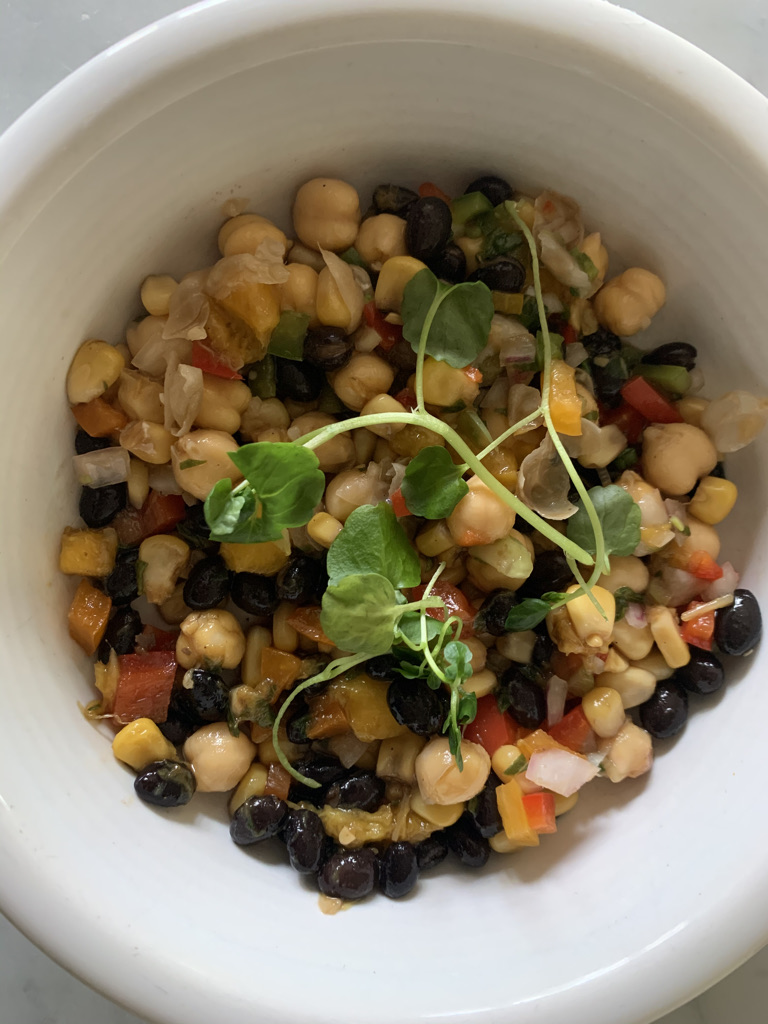Prebiotics are an important part of an anti-inflammatory diet, because they support the microbiome, a complex collection of bacteria, virus, and fungi that inhabit your skin and digestive tract. The majority of the human microbiome resides in the large intestine, and is made up of more than a thousand different species. These bacteria are responsible for breaking down toxins, providing protection from pathogenic organisms, synthesizing vitamins, and breaking down complex carbohydrates like starch and fiber.
Short chain fatty acids are the product of microbiota-digested fiber in the large intestine. These important fats reduce intestinal permeability, and keep unwanted food particles from interfacing with your immune system. Butyrate is one of the short chain fatty acids produced by specific bacteria in the colon. Butyrate plays a protective role in maintaining the health of the colon, protecting against colon cancer, and, even plays a role in mood regulation.
Beans are a rich source of fiber that can be broken down in the large intestine by gut bacteria into short chain fatty acids. In that way they are “prebiotic,” or providers of the soluble fibers and resistant starches that make it to the large intestine intact. Other prebiotics include whole grains (barley, rye, wheat, oats), fruit ( dried fruit, watermelon, apples, pears), and vegetables ( garlic, onion, leek, asparagus, Jerusalem artichokes, and chicory). Prebiotics are also slowly digested carbohydrates that help the body maintain a stable blood glucose level, and may help you feel satisfied longer.
The bottom line-eating beans, and other prebiotic foods, feed important gut bacteria, and, in doing so, lead to the production of short chain fatty acids which have multiple health benefits.
Kitchen-Prescription Recipe: Bean Salad with Mango and Cilantro

Ingredients:
One 15 ounce can of chickpeas, BPA free can, drained and rinsed
One 15 ounce can black beans, BPA free can, drained and rinsed
1 medium red pepper, chopped
1 medium yellow pepper, chopped
½ cup chopped mango
½ cup chopped red onion
½ cup cooked yellow corn cut off cob
1 recipe of Apple Cider Vinaigrette-see recipe below
In a large bowl add chickpeas, red and yellow peppers, mango, onion and black beans and mix. Add the vinaigrette, and top with cilantro. Salad can keep in the refrigerator for 4 days.
Apple Cider Vinaigrette
1 tablespoon of thinly shaved onion
3 tablespoons of organic Apple Cider Vinegar, preferably with the ‘mother’
1 tablespoon of water
¾ Cup of extra Virgin olive oil
One minced garlic clove
Fresh thyme leaves from two stalks, approximately 1 1/2 teaspoons
1 tablespoon of grainy mustard
1 teaspoon of kosher salt
several grinds of freshly ground black pepper
Combine the thinly shaved onion and the Apple cider vinegar in a bowl, and allow to sit for five minutes. Add the water, extra Virgin olive oil, garlic, thyme leaves, grainy mustard, salt, and pepper. Whisk to combine, and taste for seasoning. This recipe makes enough for several salads, and can be stored in the refrigerator for up to a week.
K-P Cooking Tips:
BPA + Phthalates
BPA or Bisphenol and phthalates are found in cans, water bottles, plastic dinnerware and thermal receipts or paper sales receipts. Metal food and beverage cans are lined with epoxy resin coating from a family of chemicals called bisphenols. They disrupt our body’s hormones and are linked to fertility problems in both women and men. These endocrine disruptors can lead to brain and behavior disorders in infants and children and are also associated with increased rates of diabetes, heart disease, cancer and obesity in adults. Of note, during the COVID pandemic, using hand sanitizer increases bisphenol absorption ten times after handling thermal paper receipts.
Definitely going to make the beans salad!